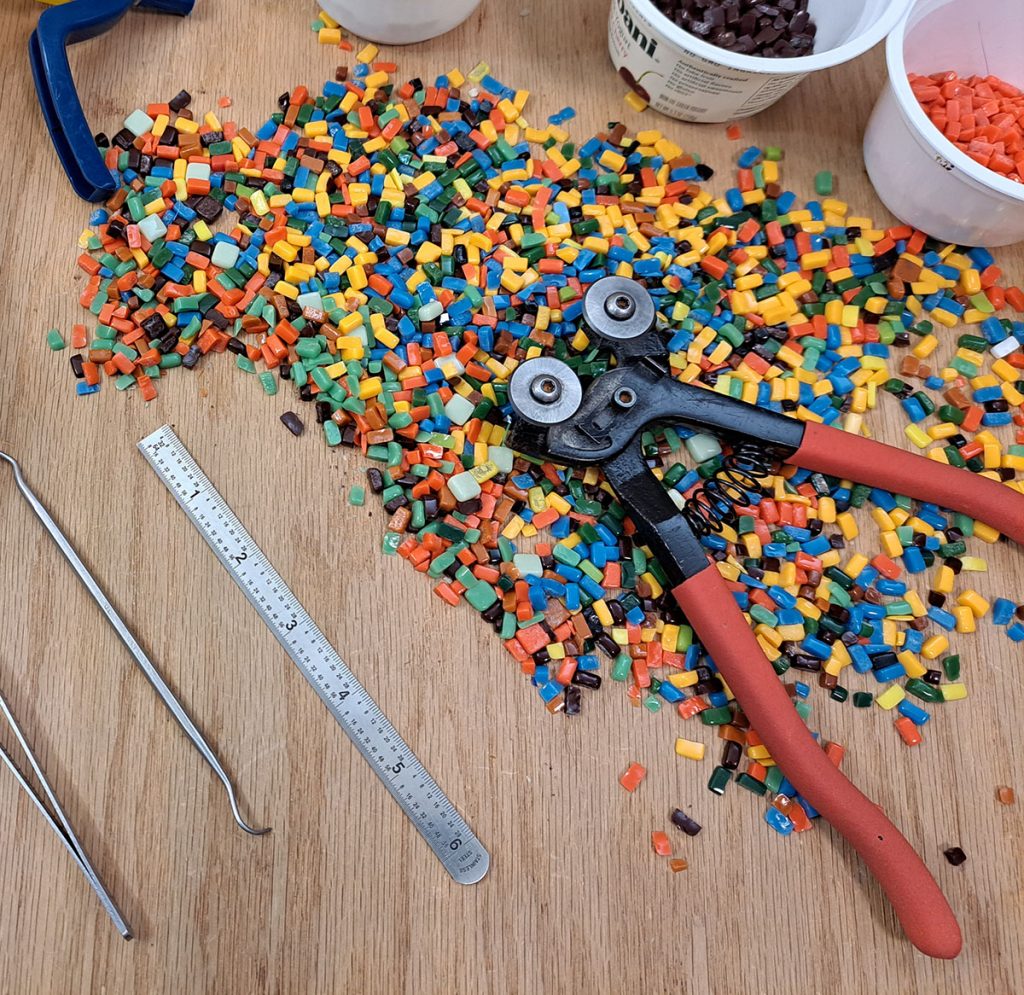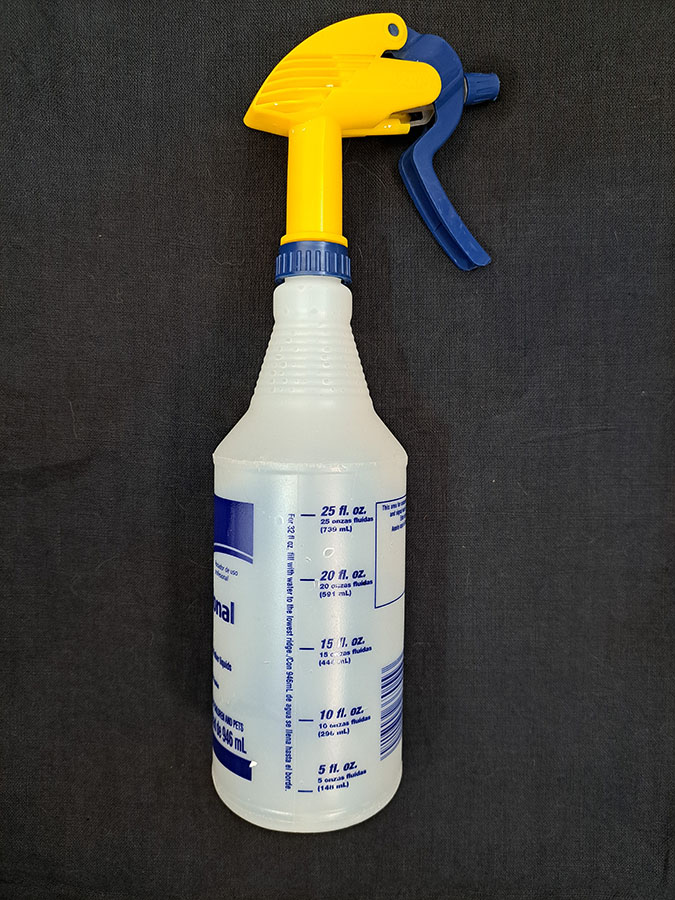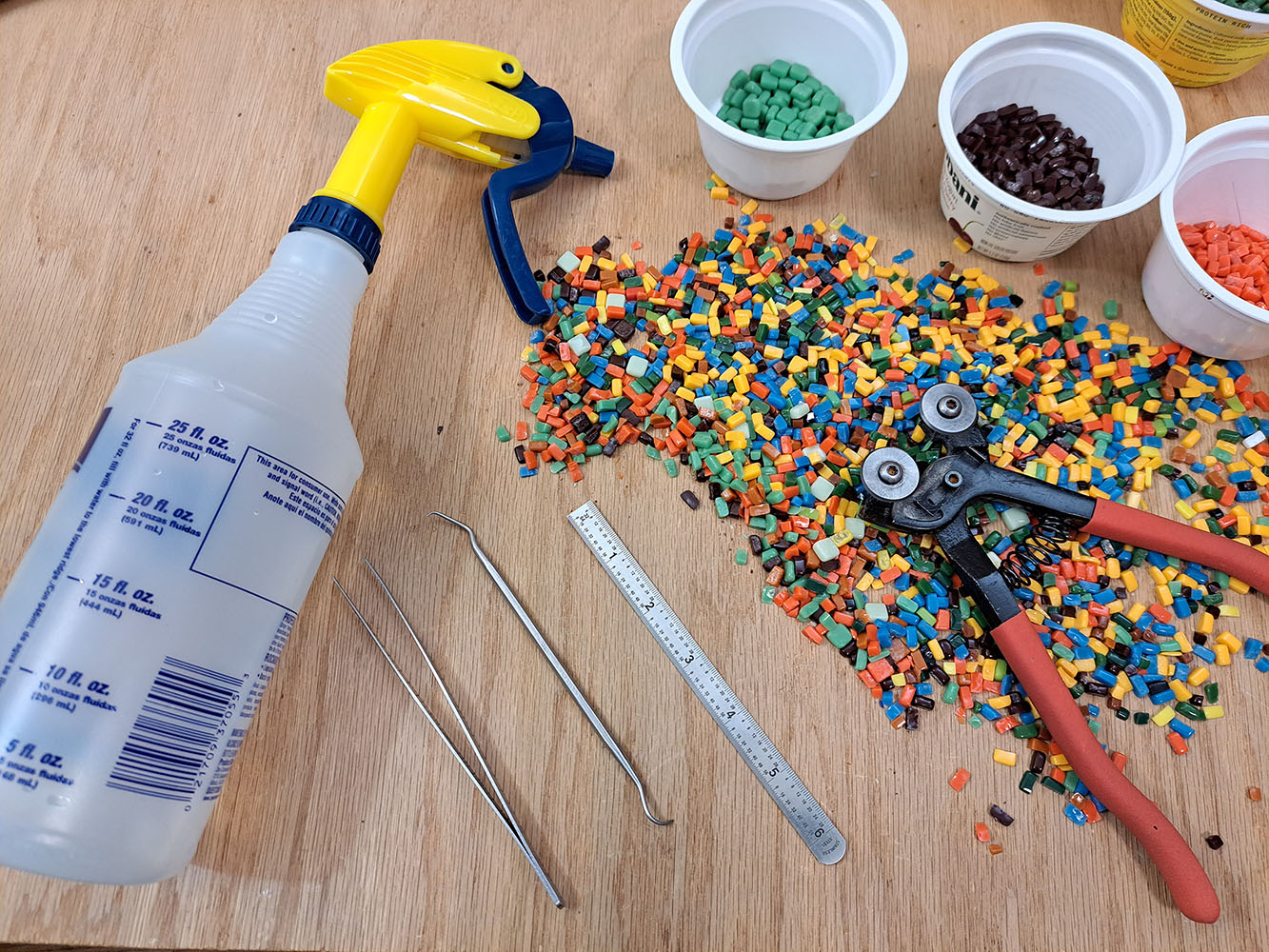A stainless-steel ruler and a spray-bottle filled with water are all you need to avoid the most common injury and the most serious risk associated with creating mosaic artwork.
Stainless-Steel Ruler
The most-common injury caused by glass mosaic tile occurs when the an artist uses there hand to wipe a work surface free of tile cuttings.
Even if the work surface looks clean or relatively clean, there are tiny slivers of glass that make long razor cuts in any hand or arm casually slid across them.
These slivers are hard to see. I’m not talking about the tesserae or odd cuts or anything easy to see at a glance.
You will see blood if you sweep a cutting surface with your hand, no matter how carefully or gently you try to do it.
Pro Tip: Always use a straight edge such as a stainless steel ruler to sweep the tile to the side instead of using your hand, and keep your blood inside where it belongs.

A stainless-steel ruler is useful measuring and marking cuts too. It has a finer gradient marked (1/64 inch) than school rulers and most tape measures.
Powdered Grout Safety
Powdered grout and mortar products are caustic and contain pulverized silica and other minerals that generate fine dusts.
You should avoid getting this dust on your skin and in your eyes and airways, but this is not difficult.
I always wear an N-95 mask when mixing mortars and grouts, and I mix them outdoors.
However, a mask can’t protect you when you take it off and you still have dust on your clothing or hair, and a mask can’t keep your workplace clean.
The most-effective way to protect yourself from dust is to minimize the amount of dust you create.

You can do this using a spray bottle to mix the water into the powdered grout by misting instead of pouring water on top of the powder.
Start stirring slowly and mist intermittently as needed. You can do this while generating virtually no dust.
I’ve gotten to the point where I can do this process without creating any dust, even when the batch is very large and a water hose with nozzle is required instead of a spray bottle.
You can keep track of how much water you have misted into the grout by keeping track of how much is in the bottle.
You can also track how much water you have added by looking at what is being produced by the mixing.
The goal is to produce a grout or mortar that has the consistency of stiff bread dough.
You don’t want runny grout or mortar because it won’t harden properly.
Adding water slowly by misting (instead of pouring) makes it easier to avoid that problem.
Pro Tip: I always mist the area where I will be mixing grout so that the surfaces and the air over them are saturated with humidity. The humidity helps dust precipitate from the air faster and keeps mortars from skinning over. Run a humidifier if needed.


Leave a Reply